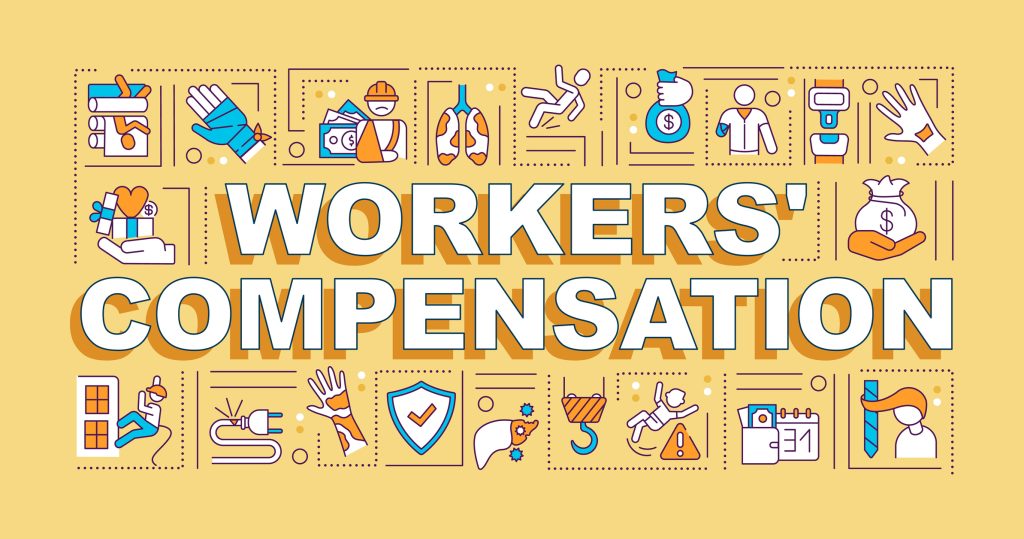
Workers’ compensation insurance is a critical aspect of managing a business, safeguarding both employers and employees. This insurance program provides financial assistance to employees who suffer work-related injuries or illnesses, ensuring they receive medical care and wage replacement. In return, it offers employers protection from costly lawsuits and helps maintain a healthy and productive workforce. In this article, we’ll explore what workers’ compensation insurance is, why it’s essential, how it works, and how to navigate the complexities of this system.
What is Workers’ Compensation Insurance?
Workers’ compensation insurance, often referred to as workers’ comp, is a state-mandated insurance program designed to cover employees who experience work-related injuries or illnesses. The primary goal is to provide financial support to employees during their recovery, as well as cover medical expenses, rehabilitation, and lost wages. In exchange for these benefits, employees usually relinquish their right to sue their employers for negligence related to their injuries, creating a no-fault system.
Why is Workers’ Compensation Insurance Essential?
Employee Welfare: Workers’ comp insurance is a fundamental component of protecting the welfare and livelihoods of employees. Accidents and injuries can happen in any workplace, and having access to medical treatment and compensation during recovery is crucial for employee well-being.
Legal Compliance: In most states, employers are legally required to carry workers’ compensation insurance, ensuring that they are operating within the bounds of the law. Failure to do so can result in significant penalties and legal consequences.
Avoiding Lawsuits: By providing workers’ comp coverage, employers protect themselves from employee lawsuits for workplace injuries. This system encourages a more amicable and efficient resolution of workplace injury issues.
Employee Retention: A robust workers’ compensation program can boost employee morale and loyalty. Knowing they have financial support if they get injured on the job makes employees feel valued and secure.
How Does Workers’ Compensation Insurance Work?
Premiums: Employers are responsible for paying premiums to insurance companies. The premium cost is typically based on the company’s industry, size, and the number of employees. High-risk industries, such as construction, generally have higher premiums.
Coverage: When an employee suffers a work-related injury or illness, they can file a workers’ compensation claim. The insurance provider then evaluates the claim and, if approved, provides benefits such as medical coverage, disability payments, and vocational rehabilitation.
No-Fault System: Workers’ compensation is a no-fault system, which means that employees are generally entitled to benefits regardless of who was at fault for the injury. However, there are exceptions, such as injuries caused by drug or alcohol use or self-inflicted harm.
Medical Care: Workers’ compensation covers all necessary medical expenses related to the injury or illness. This includes doctor visits, hospital stays, surgeries, prescriptions, and rehabilitation.
Wage Replacement: Workers who are unable to work due to their injuries may receive wage replacement benefits. These benefits typically cover a percentage of the employee’s pre-injury income.
Rehabilitation: In cases of severe injuries that require vocational rehabilitation, workers’ comp can assist in retraining employees for alternative job roles.
Navigating the Workers’ Compensation System
Navigating the workers’ compensation system can be complex, with various regulations and procedures to follow. To ensure you manage the process effectively:
Understand State Laws: Workers’ compensation laws vary from state to state. It’s crucial to understand the specific requirements and regulations in your state to comply with the law.
Prompt Reporting: Encourage employees to report workplace injuries promptly, and establish a clear process for reporting accidents or illnesses. This helps ensure accurate documentation and efficient claims processing.
Maintain a Safe Workplace: One of the best ways to minimize workers’ compensation claims is to maintain a safe work environment. Regular safety training and proper safety measures can prevent accidents from happening in the first place.
Partner with Professionals: Seek assistance from professionals, such as insurance brokers or legal experts, to navigate the complexities of workers’ comp insurance. They can help you choose the right policy and guide you through the claims process.
Conclusion
Workers’ compensation insurance is a crucial element of responsible business management. It protects employees, ensures legal compliance, and safeguards your business from costly litigation. By understanding how workers’ comp works and following best practices for safety and claims management, you can maintain a healthy and productive workforce while keeping your business on a solid legal footing.
